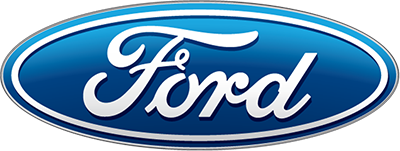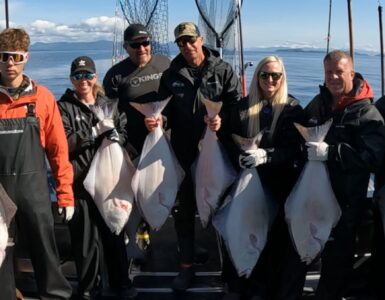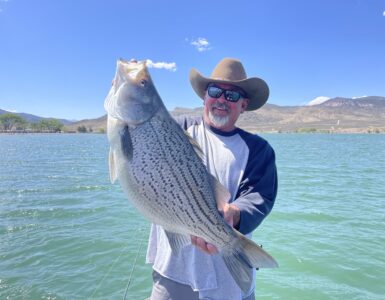(Adam) Welcome to KSL Outdoors, I’m Adam Eakle and welcome to a really gloomy day down here in the valley, we are up here in Ogden and we’ve got Paul Thompson here at the Northern region offices and boy it’s cold. (paul) it is cold, we need to get up to the river where it’s a lot warmer. (adam) we are going fly fishing today and we are going on a stretch of the river that’s only been open to the public for a short time. (paul) Just about a year, it’s one of our new walk in access pieces, I’m very excited I think we are going to have a great day on the river and catch some browns and whitefish.
The long winter is giving everyone, including me, a little cabin fever and what better way to escape the valley than a fishing trip to the Weber River.
(Adam) There’s a fish! (paul) fish on!
(Clint Brunson, DWR Walk-in-Access Manager) It’s the Thurston property in Morgan County, it has both a stretch of the Weber River and East Canyon Creek.
(fish release) there we go.
(Clint Brunson) the WIA program is a program where the DWR pays the landowner to lease their property for the public to hunt, fish or trap on their private property.
(Clint hook set) Like that. (fish splash)
Clint started the walk in access program in 2005 as a pilot program. It has now spread statewide. On the Weber alone, the DWR has acquired over 7 miles of angler access. They also have another 6.7 miles available to the public through easements and leases. It works like this, you go the DWR’s website, find property listed under their walk in access page, where you’ll find a description and rules for the property.
Once there, you sign in and there’s something new you’ll need this year called a Walk In Authorization number.
(Clint) part of the way that we are getting our info not only from just the boxes, but from a walk in access authorization permit. That is a free permit, you can go on-line or there is a free number that is listed right here on the signs.
(mickey) I’m calling in on a walk in access area.
(Clint) and they will give you a number that you will write down in the box. And that gives us a way to send a survey to all those who use walk in access so we can receive some information.
(set hook) there we go, feels like a pretty decent fish.
While fishing, we actually ran into the landowner, 84 year old Fred Thurston.
(Adam) Why participate in the program?
(Fred Thurston, Landowner) Well, i guess it’s because this is mother nature and it was put here to be used and not just locked up so nobody could get in here and use it and enjoy it. That’s the way I look at it. As long as we can keep it damaged and stuff while, we’ll be ok.
(Paul) this is about an 18 inch brown, good fish, nice fat, healthy this winter. They are starting to feed in the afternoons at least and it should just get hotter and hotter as the spring goes on.
(Adam) anything sideways or stopped. (clint) right. (hit) (adam) like that? (adam) that was a subtle hit. (clint) oh yeah arial! Yes!
(Phil Tuttle) we are using sow bug patterns, if you grab some vegetation and open that up there’s these little sow bugs, they are probably 18 and 20’s most of them. But they are really thick in here, great pattern to use in the winter.
(net fish) Uh…brown.
(Paul Thompson) 3 major species, you’ve got brown trout, bonneville cutthroat trout and you’ve got mountain whitefish.
(Rex) Oh that’s a big whitey
(Mickey Anderson, Fish Tech Outfitters) oh man I love whitefish, they are hard fighting, take flies, they are big, there’s nothing wrong with them, everybody poo, poos them and they shouldn’t ,it’s a fabulous fish.
(Paul Thompson, N. Reg. Aquatics Manager) it is a great fish and in the winter, they are always feeding. Brown trout kind of turn on and off and you might be on a stretch of the river where they are just not on for the day and they have saved me on a lot of days from not catching fish from having a great opportunity in catching some nice fish.
(Adam) Wow that’s a good fish.
(adam) that shows you there’s a lot of fish in there if Clint is catching them. (paul) that’s a true statement. (adam) and You have a different place for us to try? (paul) we do, we are going to go downstream, see if we can get into more fish there. (adam) Plenty of whitefish for the smoker, coming up a different section of the stream up next, but first tonights quiz question.
(net fish) way to go Clint, nice fish! (clint) woo hoo. That might be the fish of the day right there.
******************************************************************
(hook up) there you go.
(Paul Thompson, DWR N. Reg Aquatics Manager) about the 1/4 mile that you can see above us here was just one long riffle about 8-9 years ago. They DWR came in here and put in all of these structures, created nice pools, holding areas for fish. 33:53 it’s really helped this reach as far as an anglers perspective and the numbers of fish that are here.
(paul with fish) that’s decent Weber River brown, about 16, maybe 17 inches, lots of shoulders on this fish, they are good condition this winter.
(Paul) I try to get up here as often as I can. I probably make about 50 days a year on the Weber. So i do, I fish it a lot it’s my favorite home river, has some great fish, nice browns, nice whitefish and the Bonneville cutthroat numbers are really coming on too.
(Paul) Oh baby, what have we got here.
(Net fish) Beautiful cutthroat.
(Paul) here’s a beautiful Weber River Cutthroat. We are seeing more and more of these fish in parts of the Weber. So much so that we did do a regulation change that went into effect January 1st. It’s from the GSL up to Echo Reservoir Dam. All Bonneville Cutthroat trout are catch and release. What we are trying to do with this regulation is we are seeing that there is a lot of fish in this reach and we want to protect them and help the population grow. Some of these fish are even fluvial fish and what that means is they get larger, a lot of them are 16-18 inches with fish even up to 22 inches and these fish will either travel long distances and spawn either in the main stem Weber, but a lot of them we are finding are going up tributaries to spawn. So it’s a really unique life history for them that we are trying to protect and actually increase this population.
(phil netting fish) cutty in the net. (adam) cutty? (phil) cutty in the net.
(Paul) so by releasing these fish, we should have more spawning and increase our population size.
(Phil) a month from now on the Weber you’ll see some BWO, even less than a month you’ll see some small mayflies start coming off. They’ll come off better on cloudy days, even some snow or rain mixed in those will be the days that the hatch will produce the most.
(Phil) the weber can be a little finicky for dry flies. Midge patterns, anything real small, the smaller your more comfortable with, the better. Even down to size 24’s when the midges are popping.
(net fish) Nice brown…come on buddy, (net fish) Laughs.
(TAG) (phil) You know there is a lot of fish this size, this is probably a 17-18 inch fish. (adam) and you see them even bigger? (phil) oh yeah, well over 20 in this river. (adam) well this is a beautiful stretch of the Weber River where the Division has done some nice habitat work on and nice browns, even some cutthroats, but remember if you catch any cutthroats, even if they have just a hint of cutthroat markings you’ve got to release them back into the river. Hey let’s head back up the river now to Mickey for tonights fishing report.







Add comment